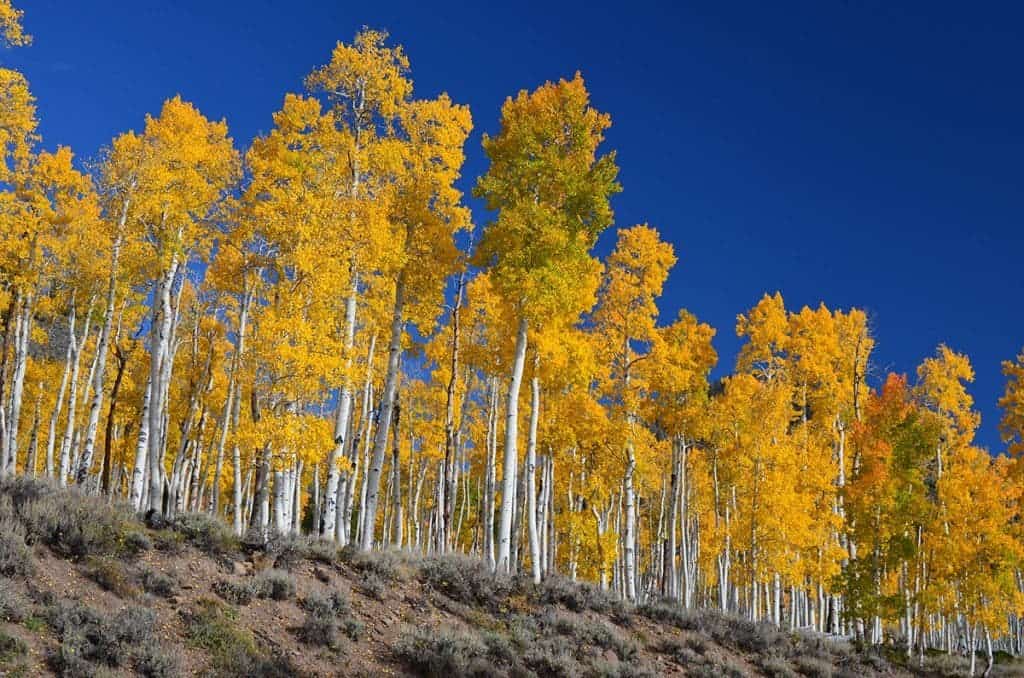The largest organism in the world isn’t an elephant or a blue whale but rather an Aspen forest called Pando, stretching over more than 100 acres outside the Fishlake National Forest in Utah. Above ground, these trees appear to be distinct individuals, but underground they remain interconnected and are all clones of the same plant. For more than 80,000 years, long before any Homo sapiens laid foot on Utah, the tree has perpetuated its genetic material — but now, it is in danger.

Researchers at Utah State University performed an aerial survey of the ancient Pando clonal colony and found that it is retreating as older trees die off, with no new ones taking their place. According to the study published in PLOS One, Pando is gradually withering away due to grazing from mule deer, elk, and cattle.
Pando is located one mile southwest of Fish Lake on Utah’s Route 25. The Trembling Giant, as it’s also called, likely grew in ideal conditions for most of its life. Pando’s main competitor are conifers, but these were wiped out by frequent fore fires. Because the fire would never reach the aspen colony’s underground root system, new stems would pop up in the aftermath of each wildfire, replacing the competition.
[panel style=”panel-success” title=”How the Pando spreads” footer=””]A clonal organism (also called a genet) is a group of genetically identic individuals (usually plants, fungi or bacteria). It’s basically just one individual, with more manifestations.
All of Pando’s trees originated vegetatively, not sexually. Vegetative reproduction is a form of asexual reproduction in plants, with new life emerging without the production of seeds or spores.
Clonal aspen colonies are quite common, but according to an Organization for Economic Co-operation and Development (OECD) report, they rarely grow over 0.1 hectares.[/panel]
It’s all on us, again
Pando’s strategy has been highly successful so far — after all, it’s more than 80,000 years old and weighs a staggering 6,000,000 kg. But, as it happens all over the world, human activity is also chipping away at the ancient organism.
Campgrounds and cabins have attracted a lot of wildlife in the area, creatures that aren’t put in check by predators such as wolves, which we previously exterminated. Free to roam Pando’s grounds, deer and cattle graze the forest, steadily degrading the colony.
“The aerial photo sequence depicts various human intrusions over the past seven decades, but perhaps most telling, a decline in self-replacement beginning 30–40 years ago. Aspen communities in many locations in North American and Europe are impacted by unchecked herbivory,” the researchers wrote.
Without careful management of the forest, Pando could shrink to a shadow of its former self. And without young trees to replace old individuals, the forest might one day disappear entirely.
To mitigate Pando’s destruction, the researchers recommend more fencing and deer management. Last but not least, they also suggest that the public should be better informed of Pando’s significance.


